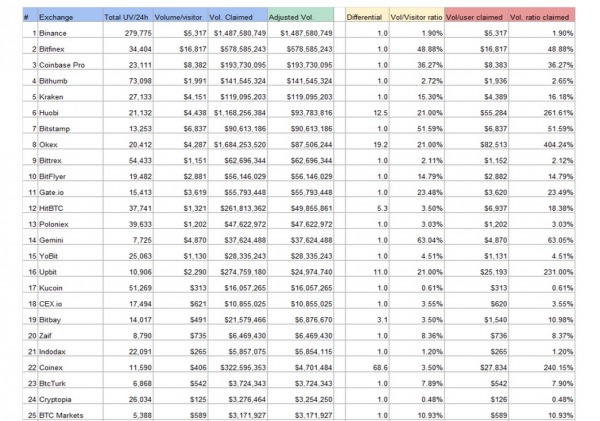Cryptocurrencies are not financial products like stocks, bonds, and currencies (at least from the legal view at this moment), but they bear similarities in that they can be traded. Just like we have the stock exchange for trading stocks, crypto exchanges exist for the purpose of trading cryptocurrencies. The regulations concerning trading in the stock exchange we often assume hold true for trading cryptocurrencies also.
Although the legal framework for the regulation of cryptocurrencies is not yet set in stone, there are some basic trading activities that are understood to be illegal and constitute a crime. One example is insider trading. Another example is known as wash trading.
What is Wash Trading?
Wash trading is a process whereby a trader sells and buys a financial instrument for the purpose of creating misleading and artificial activity in the marketplace. In this case, the “financial instrument” is a crypto coin or token.
The idea is to sell at a loss and re-buy to give the impression that there is actual trading activity — when actually value does not exchange hands, but rather stays in the same hand through the transaction. This is considered illegal because it falsifies the trade volume.
Wash trading was declared illegal in the USA in 1936 when the Commodities Exchange Act was passed. The IRS defines a wash sale as one that occurs within 30 days of buying the security, which results in a loss. Therefore, the IRS does not allow US taxpayers to deduct losses that result from wash sales.
There is currently no known global regulation against wash trading in crypto, but it remains an unsavory practice, as it manipulates market data. Meanwhile, the US has officially declared bitcoin to be a commodity and hence the rules of the Commodities Exchange Act will apply to bitcoin trading. It is yet uncertain how other cryptocurrencies will be classified as they may not all fit as commodities and hence still make room for market manipulation. However, if investors realize they were misled by the market data information released by an exchange, they could take up a legal case that could hurt the exchange.
Wash Trading in Cryptocurrencies
In the cryptocurrency market, there are signs that imply that some exchanges engage in wash trading to inflate their trade volume numbers. The methods used by Coinmarketcap to determine the trade volume, even with the “Adjusted Volume,” have been questioned by several people in the industry.
According to research by Blockchain Transparency Institute (BTI), about $6 billion in daily volume is being faked through wash trading.
What could fuel the motive for wash trading? The BTI research noted that up to 90% of referral volume from new and aspiring exchanges comes from ranking websites, with about 83% coming from Coinmarketcap alone. This provides a motive for exchanges to overstate their daily trading volume through wash trading.
BTI Methodology and Result
The method used by BTI to derive more accurate data of the trade volume across the exchanges is the combination of available order book liquidity and unique daily visitor counts. The research was conducted on numerous web traffic data websites, especially SimilarWeb.
Exchanges with the most unique visitors per month likely have the most customers, which generally means they have more daily traders and hence higher trade volume.
When the trade volume of a particular exchange calculated this way is significantly less than the trade volume the exchange claims, that suggests that there is wash trading going on. This is a form of market manipulation.
From the methods and calculations by BTI, the following were recorded of the top 25 exchanges:
A total of 131 crypto exchanges were researched. The total trade volume claimed by the exchanges was about $9.6 billion, while the adjusted trade volume based on the research was $3.2 billion. The supposed trade volume being faked by wash trading equaled about 67% of the volume claimed.
The full data spreadsheet for the calculation is accessible online. The organization is open to clarifications by crypto exchanges if any error or omission was made, as there will be updates to this data.
Conclusion
As regulations kick in in the world of cryptocurrencies, we will see more transparency from blockchain projects and crypto exchanges. This is a welcome development, as it makes the blockchain industry appealing to institutional investors.
In May 2018, the South Korean government opened an investigation into the popular crypto exchange, Upbit. The investigation was led by a raid of the crypto exchange for allegedly manipulating their records to deceive investors.
However, after an audit was made, the exchange was found to be clean of any market manipulation. This shows that while there might be suspicion and allegations of market manipulation, transparency can combat rumors by producing facts that the community can count on.
Crypto exchanges like Binance and KuCoin continue to show strong prospects in crypto trading with their innovative and transparent business approaches. It is expected that more crypto exchanges of this sort will attract and encourage trading on their platform, and through their innovative and high-quality platforms dispel the speculation (or reality) of wash trading.
Related: What Will Coinbase Add Next? 3 Coins That Could Be Considered for Listing in the Near Future


